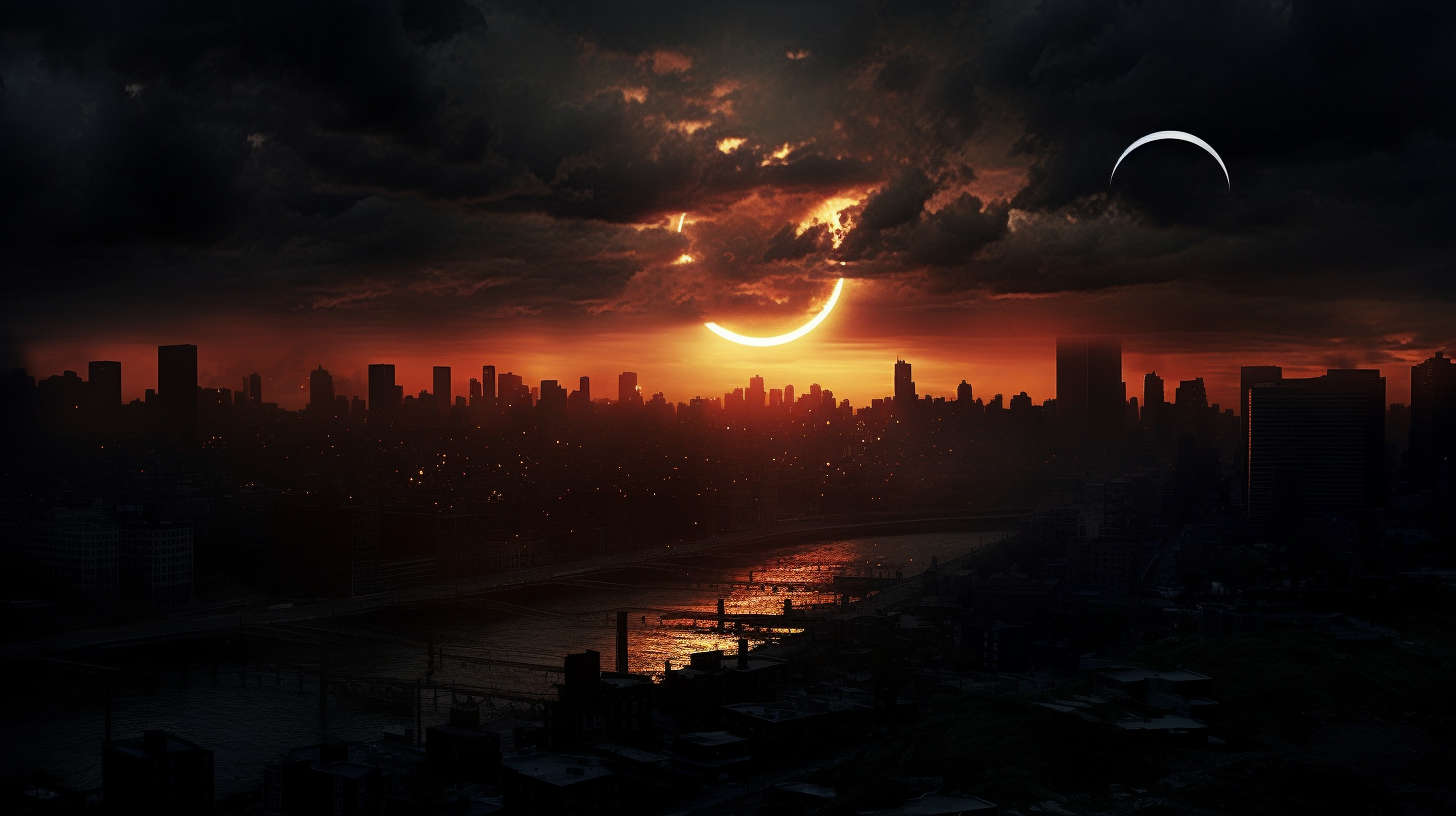In the canvas of our world, where once were painted the deepest blues and the brightest stars, now lies a heavy smear of grey. In this latest exploration of our environment’s deconstruction, we traverse the landscape of dimmed horizons, where darkened skies preside over the eclipse of not only sunlight but of vital sights and senses that once defined the human experience.
The overture of dawn and the crescendo of dusk have dwindled into a monotonous murk, embodying the symphony of an ecosystem out of tune. The sunrise, once a symphony of hues and a source of life’s rhythm, struggles against the heavy veil of pollutants that signal our engineered Armageddeon. Our generation witnesses an aberration of the daily miracle—the sun’s warmth is distanced, a stranger rather than life’s steadfast companion.
Yet, it is not only the light of day that wanes. Our nights, consumed by the artificial glow, now scarcely remember the majesty of the dark sky. ‘Night Skies, the Lost Canopy’s Legacy,’ our previous foray into the celestial plunder, lamented the lost connection to the cosmos. We grieve the muted tapestry of stars, once guides for mariners and muses for poets, now a faded memory, a nostalgia for clarity, usurped by our ceaseless expansion.
The tragedy unfolds in veiled dominoes: the disappearance of the Milky Way in our children’s eyes, the confusion in migrating birds, and the disruption of nocturnal wildlife—each an elegy to the diversity we once celebrated. These stories sewn into the night are unravelling, one silent thread at a time. It’s a catastrophic pantomime where sunsets and sunrises no longer bookmark our days, ‘eclipsed’ by a permanent dusk—a relentless glare of human excess.
Consider the heritage of astronomy, where constellations like Orion’s Belt or the Big Dipper don’t just belong to the past, but have had their future stolen. The once potent Aurora Borealis, the earth’s very own natural spectacle, flickers weakly as if behind storm clouds in the regions fortunate enough to still witness its struggle against the skyglow.
As we dissect this epoch, narratives of environmental decay weave through metaphors of darkness and obscured vistas. It is no coincidence that the eradication of species parallels the vanishing of stars. Each lost organism, like a snuffed-out starlight, dims the natural network and extinguishes a story millions of years old. We live in chronological poverty, starved of both past wisdom and future potential.
A dystopian pall blankets us, where hopeful youths once would look up to dream and plan. Now, the grit in the air clings and chokes those dreams, each breath a reminder of the world they inherit, secluded from the universe’s grandeur.
In conclusion, as we reflect upon our darkened skies and the vital sights that have dimmed alongside, we acknowledge this cosmic void as a mirror to the plight of our gravely miscalculated stewardship. The eclipse we witness is not a natural celestial phenomenon but a cultural and ecological blackout, one bridging the gap between the earth and heavens with a shroud of solemn finality.
Our civilization, once enchanted by the mysteries of the night sky, now grapples with a self-inflicted nocturne, where each day’s closure serves not as a restful silence but a cacophony of what is absent, what is erased, and what haunts us in the stars unseen.
